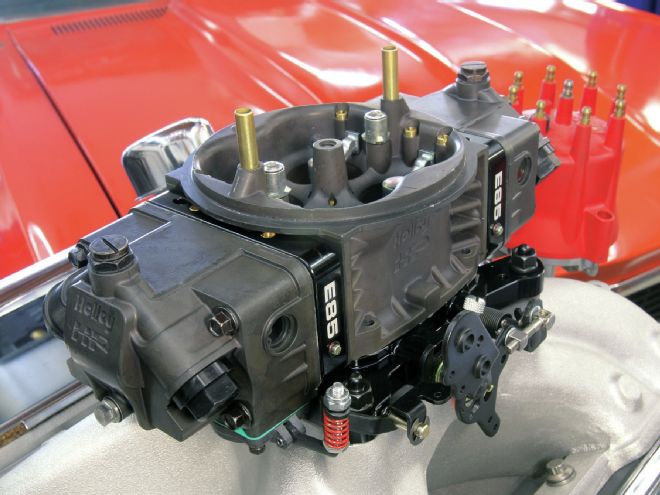
Bob Dylan wrote "The times they are a-changin'" way back in the '60s and those words still ring true today—even for the fuel you pump into the tank of your Mustang or Camaro. A growing trend is the move to E85. If you're into making serious horsepower, especially with boost-friendly power-adders, then E85 fuel is hardly a new topic. The power advantages of this alcohol-based fuel border on the mystical. But this fuel also brings with it a few concerns with fuel delivery and corrosion.
In case you're not up on E85, let's do a quick background check. The reference is for 85 percent ethanol and 15 percent gasoline. Ethanol is basically grain alcohol—the same moonshine that bootleggers have been distilling for centuries. The big advantage of ethanol is its octane. Pure ethanol proudly proclaims roughly a 115 achievement, but when mixed with 87-octane gasoline, the number drops to between 100 and 105. This is still an excellent octane number, so right away you can see the benefit to running this fuel in either a high-compression, normally aspirated engine or in a boosted application. At the '13 Real Street Eliminator dyno test, Justin Nall's twin-turbo '66 Chevelle made nearly 800 rwhp with this stuff straight out of the pump.
Another big plus is that E85 is radically less expensive than race gasoline. The typical nationwide price for 100-octane race fuel as this story was written was around $8 per gallon, while E85 prices hover around a national average of $2.74 with a range of between $3.50 and $2.10 per U.S. gallon.
An important point to acknowledge is that E85 delivers roughly 30 percent lower BTU heat value per pound of fuel compared to gasoline. That means the engine must burn 30 percent more E85 to make the same amount of heat. This obviously reduces fuel mileage by roughly 30 percent and effectively increases the price per gallon by roughly 30 percent. But when you compare the cost of E85 to race gasoline, the cost-to-benefit ratio is still very attractive.
All this should be common knowledge by now, especially for long-time Car Craft readers who have ingested our earlier E85-testing stories. But there are some other issues that are worth discussing in terms of using E85 on a long-term basis. Because E85 is an alcohol-based fuel, there are valid concerns about long-term use and storage compared to gasoline. We've decided to wrap all these ideas up into a simple story that takes into account all these variables for using E85 on the street.
Alcohol does tend to be hygroscopic, which means it will absorb water right out of the air. So when you store the car for long periods, it's best to keep the tank as full as possible and use some kind of chemical like Sta-Bil or Driven's Carb Defender. If you know the engine will sit for extended periods of time (like in winter storage), the ideal plan would be to drain the fuel and run a slug of gasoline through the system. This will prevent the issue of phase separation, where the percentage of water in the alcohol becomes great enough to cause it to settle at the bottom of the tank (or carburetor bowl) and could cause corrosion. So a little more maintenance is required, but this is hardly a deal breaker. The advantages of E85 far outweigh these minor grievances.
Carburetors and EFI
Our focus will be on E85 carburetors for this story, although there is also plenty of potential on the fuel-injection side of things. It is possible to convert a standard Holley carburetor over to E85, and Quick Fuel offers an affordable kit that replaces the metering blocks, accelerator-pump squirters, and air bleeds on a typical 4150-style Holley carburetor to recalibrate it to flow the roughly 25–30 percent more fuel required. Or if you'd rather not bother, Holley and Quick Fuel both offer new E85-calibrated carburetors. Holley's new alcohol-ready HP carbs come in a new black finish that helps prevent corrosion. Just like Holley's HP series for gasoline, these carburetors are ready to run right out of the box. As far as tuning is concerned, we've found that E85 engines are not nearly as sensitive as gasoline when it comes to wide-open throttle (WOT) air/fuel ratios. Alcohol engines (both ethanol and methanol) will deliver excellent power at much richer ratios without suffering a power loss. The general rule of thumb for E85 engines is to shoot for a range between 7.0:1 and 8.5:1 air/fuel ratio. Most aftermarket air/fuel ratio gauges can be calibrated to display these numbers.
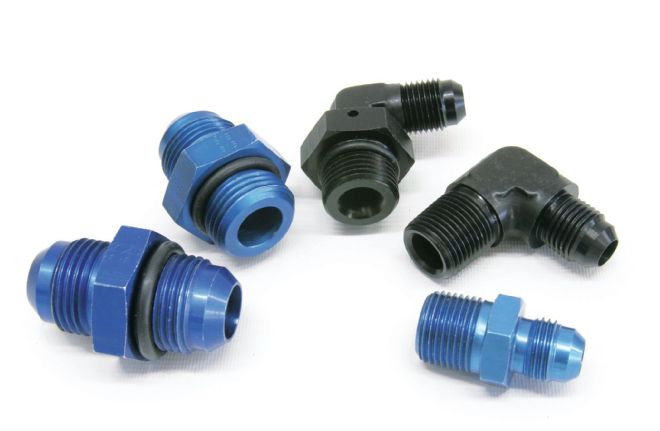
We modified this gasoline 750-cfm Holley with a set of E85-calibrated metering blocks from Quick Fuel and used this carb on the Blue Collar 454 dyno test, where the budget Rat made 589 hp (Feb '13). The conversion is easy if you have experience with rebuilding Holley carbs. It's also a good idea to convert to larger 0.130-inch-diameter needle and seat to accommodate E85's greater fuel-flow requirements.
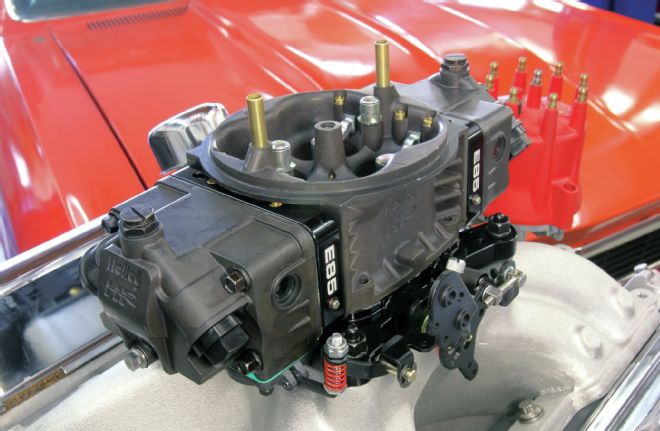
Holley just introduced these new E85 calibrated HP carburetors at the end of 2013. The sizes range from 600–950 cfm and offer several new features including 20 percent larger bowl capacity, 0.130-inch needle and seat assemblies, 50cc accelerator pumps, and all-aluminum construction that is nearly 40 percent lighter.
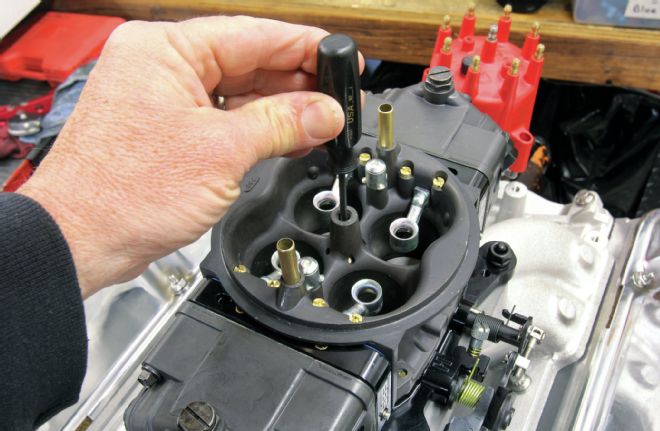
New E85 HP Holleys also come with this nice idle bypass feature. Note the hole in the air-cleaner stud base that channels air to a screwdriver-adjustable valve in the base plate. This valve bypasses air into the engine so the throttle blades can remain in the proper orientation for the idle transfer slot. This idle bypass eliminates drilling holes in the throttle blades for engines with big camshafts.
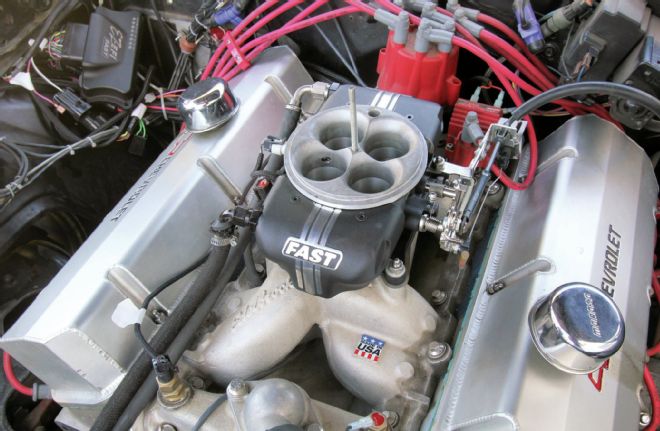
Another fuel-mixing idea for E85 would be to employ the FAST's EZ-EFI 2.0 throttle-body system. It uses eight injectors that have tons of capacity to feed even the most demanding normally aspirated E85 engine. And with its self-learning capability, it tunes itself!
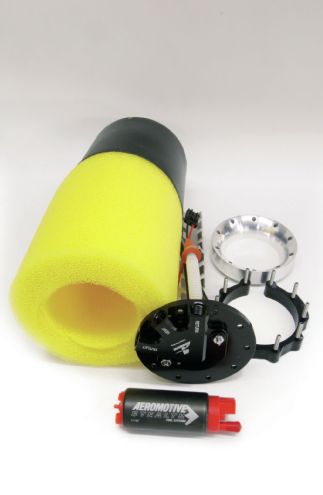
Aeromotive's Phantom in-tank fuel pump conversion uses its Stealth 340 turbine-style fuel pump. It is an excellent way to convert a muscle-car fuel tank to either carbureted or high-pressure EFI applications. This kit creates its own in-tank reservoir, combining the black rubber base with the yellow fuel cell foam. This kit can be retrofitted to virtually any muscle car. We performed a complete how-to in the Oct. '13 issue ("The Phantom Knows").
Fuel Delivery
This is all about electric fuel pumps and E85. Most upright pumps, where the electric motor is separated from the fuel, are compatible with alcohol fuels—although you should still consult your manufacturer to ensure this is true. Horizontal electric pumps are a more critical question. The standard now is for horizontal pumps to be submerged in the fuel tank. Something not widely known is that horizontal pumps push fuel around and through the pump's electric motor. This places electrical components like brushes and commutators in direct contact with the fuel. Gasoline is a great lubricant and coolant for these pumps, but the alcohol in E85 is a "drier" fuel with reduced lubricating properties. As a result, many horizontal electric pumps are not compatible with E85. Aeromotive's Jesse Powell told us that Aeromotive has tested its popular Stealth pump with E85, and while the two are compatible, there will be some increased wear on the electric motor's commutator. This will eventually reduce the pump's long-term durability, but Powell stresses it's not a serious problem. Holley has also just released a line of electric pumps that are also E85 compatible.
Capacity is the next question. Because of E85's roughly 30 percent lower BTU heat output, pump capacity may have to increase a similar amount. This generally shouldn't be a problem since new turbine pumps offer excellent output capacity. For example, Aeromotive rates its Stealth pump at 375 liters per hour at 13.5 volts at a delivery pressure of 20 psi. This equates to roughly 610 pounds per hour of fuel. On a normally aspirated carbureted application burning gasoline, Aeromotive conservatively rates this pump capable of feeding 1,100 hp, assuming the proper combination of filters, regulators, lines, and fittings. So for E85, this number would drop to roughly 770 hp, all else being equal. Holley also offers both an HP and Dominator line of pumps that are fully E85 capable. The Dominator line boasts serious flow capacity by combining two pumps into one body with capacity to feed up to 2,100 hp!
Filters and Regulators
Let's hit the big problem square on. Aeromotive tells us its testing reveals that commutator wear accelerates because of E85's reduced lubricity. As parts wear, material ends up trapped in the downstream fuel filter, meaning the filter(s) must be serviced more frequently than is typical for gasoline filters. Plus, Powell says it's imperative that any paper fuel filter be replaced with stainless filters when using E85. Aeromotive's testing has shown that alcohol breaks down the glue used to adhere the paper to the metal end caps, which both reduces the filter's efficiency and causes big problems downstream when this effluvia ends up in the carburetor or fuel injectors. The typical E85 filter recommendation is to use a 100-micron stainless filter before the pump followed by a 40-micron stainless filter on the outlet side. Aeromotive and Holley both recommend using a coarse filter before the fuel pump to reduce inlet restrictions, which improves pump efficiency. Filter size is also important: a larger filter allows longer service intervals due to its larger surface area. Never use those small, disc-type fuel filters because they clog easily and will then overwork the pump until it fails. Large fuel filters will reward you with a trouble-free fuel system that will last for years.
With E85's greater demand for fuel volume, the pressure regulator, fittings, and even the fuel lines will need to be evaluated to meet the volume required. Most fuel-pressure regulators utilize a rubber diaphragm that's exposed to the fuel, and budget regulators are likely to use a rubber that's incompatible with alcohol fuels.
Parts List
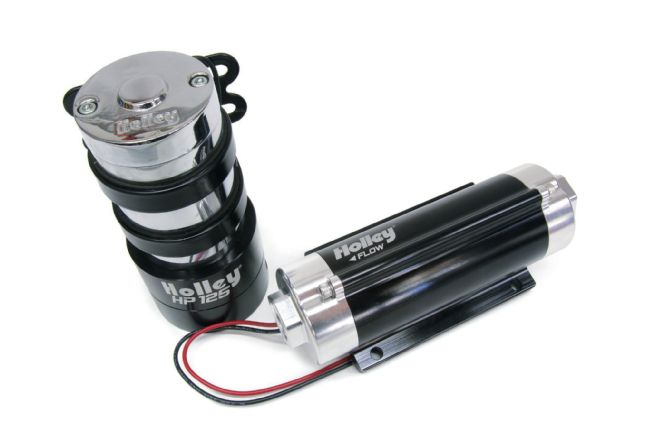
The standard vertical design (left) pushes fuel through the bottom pump portion, separating the pump's electrics from the fuel. Modern horizontal versions (right) push fuel directly through the spinning pump, keeping it cool. Both of these Holley versions are E85 compatible.
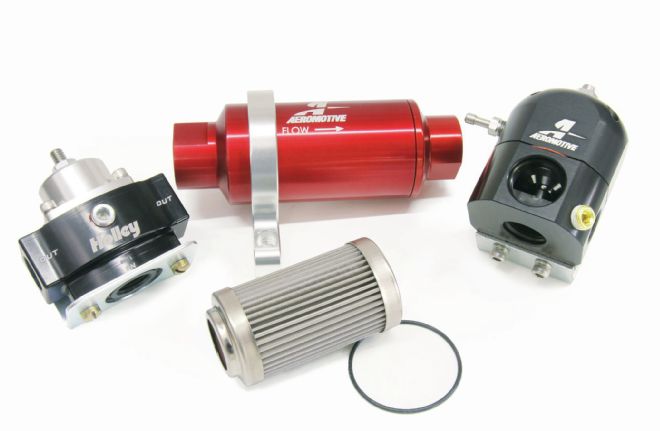
This is a large- surface-area, 40-micron stainless steel filter that Aeromotive recommends using downstream of the pump for E85-fueled engines. Paper elements should not be used. Also note that budget filters do not use Viton rubber O-rings. Regulators should also be rated for use with E85.
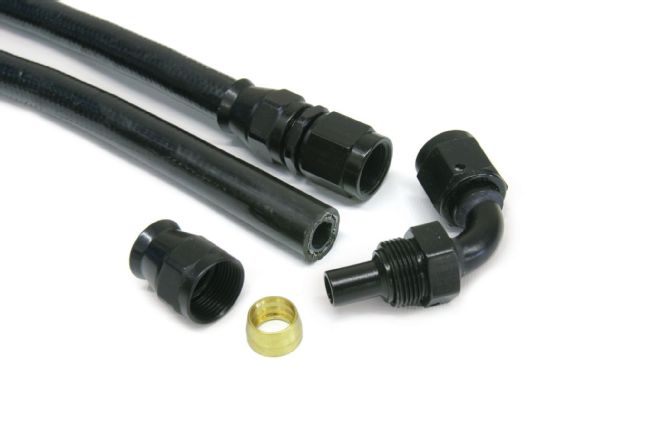
TechAFX offers this PTFE hose in -6, -8, and -10 sizes. The black, non-conductive inner liner is impervious to any fuel you want to use. This hose does require specific TechAFX fittings that use a special sealing ferrule.

Most high-quality filters and pumps use straight-thread O-ring boss (ORB) fittings that seal with an O-ring. These threads are not the same as tapered national pipe thread (NPT). This photo shows both ORB fittings on the left and center with NPT fittings on the right. Be sure to use Viton O-rings.
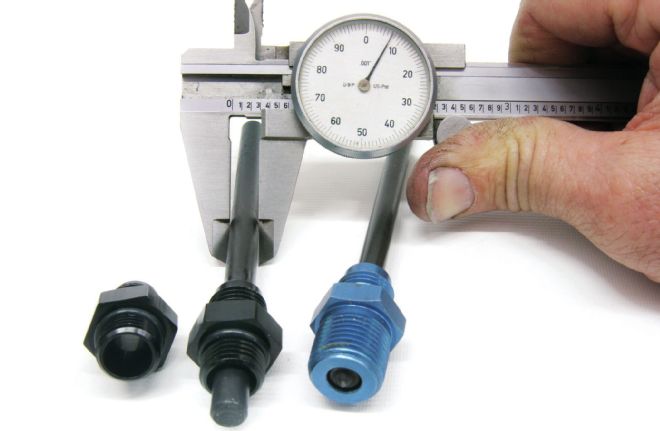
Since E85 applications require greater flow, it's important to pay attention to the little details. We placed transfer punches through each fitting and discovered that the Aeromotive tapered AN fitting on the left is as much as 0.050 larger inside diameter than the standard AN fitting on the right.
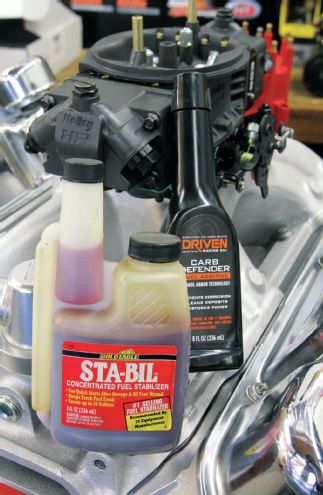
Since alcohol absorbs moisture right out of the air, this can eventually create phase separation where the water separates and collects in the fuel system. One way to combat this is with additives like Driven Racing Oil's Carb Defender. This additive prevents corrosion from forming in the fuel system and carburetor. Another good additive that works well and is easily found on store shelves is Stabil.